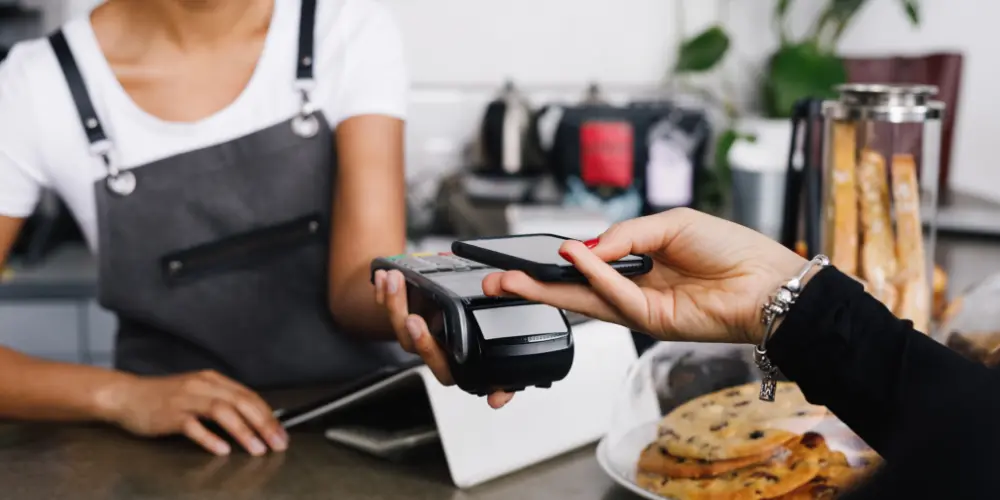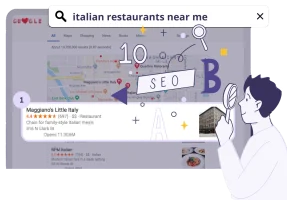Restaurant data is important. Even more so, if you’re an ambitious restaurant owner who wants to devise an effective restaurant strategy to improve operations and customer experience. But is all data important? When you’re trying to navigate the ins and outs of marketing, optimise your day-to-day operations, or even understand your main customer base and their preferences – it can feel like the obvious answer is yes.
Yet, processing all data points isn’t only inconvenient and costly (and at times impossible), but also … quite frankly unnecessary. By understanding your pressing questions and evident strategic gaps, you can effectively prioritise types of information that you need to look out for and quickly determine the best channel to collect it from. So, if like the vast majority of food establishments out there you, indeed, don’t have a dedicated full timer running all the numbers and analysing your data – we have prepared a quick rundown to get you started.
Point of Sale (POS) data

POS data is a goldmine for sales analysis. It can help you quickly identify dishes beloved by your customers, point out needed adjustments to the menu, and even improve your inventory management.
However, going beyond that, POS data is also an effective tool for revenue management and operational efficiency. It can help you not only to be better equipped and prepared for your restaurant guests, but also optimise your pricing and staffing schedule based on the booking patterns to boost your revenue and cut out unnecessary costs.
What to collect:
Transaction details: Date, time, and amount of each transaction.
Itemised sales data: Information on what menu items are being sold, including modifiers and special requests.
Payment methods: Data on how customers are paying (cash, credit card, mobile payment, etc.).
How to collect:
Integrated POS systems: Use a POS system that automatically records detailed sales data.
Regular reporting: Generate and review sales reports daily, weekly, and monthly.
Customer information
If you feel like your marketing strategy might need a little make-over – it’s time to prioritise customer information. By collecting relevant data you can open doors to personalised marketing and targeted campaigns based on your customer demographics and preferences.
This is done through the process of customer segmentation that can help you tailor your promotions and communication in line with what’s most appropriate for that customer base. In turn, it will make it possible for you to develop and optimise loyalty programs to increase repeat visits and spending.
What to collect:
Contact info: Email addresses, phone numbers, and mailing addresses.
Basic demographics: Age, gender, and location.
Visit frequency and spend: How often customers visit and what’s their average spending.
How to collect:
Sign-up forms: Collect information through online reservations systems, loyalty program sign-ups, and newsletter subscriptions.
Reservation and booking data

One of the biggest challenges of any restaurant owner is effective capacity management. By optimising seating and reducing the waiting times, you are almost guaranteed to make it to the customers’ good books.
Besides that, however, the reservation and booking data can help identify your restaurant’s peak times and devise a better strategy for the off-peak hours. Plus, it can help track special requests and identify any additional props and items you should have nearby to make sure that every guest has a comfortable stay.
What to collect:
Reservation details: Date, time, party size, and special requests.
Booking channels: Whether reservations are made through your website, a third-party app, or by phone.
How to collect:
Reservation management systems: Use an online reservation system, such as Tableo, that tracks and stores booking details.
Manual logs: Keep records of phone reservations in a centralised system.
Customer feedback and reviews

If you want to know what your customers think – why not just ask them? With qualitative customer feedback, you will be able to identify any gaps and pain points from guests’ standpoint, as well as get a clear picture of their likes and preferences.
From evaluating your staff, to giving honest opinions on their overall experience and the menu – feedback forms are one of the most powerful tools of engaging with your guests in a structured way. Plus, it can also help you stand out from your competition and improve your overall reputation management on social media and third-party review platforms.
What to collect:
Survey responses: Feedback on service, food quality, ambiance, and overall experience.
Online reviews: Ratings and comments from review sites like Yelp, Google Reviews, and TripAdvisor.
Social media mentions: Comments and posts about your restaurant on social media platforms.
How to collect:
Automated feedback forms: Even if you are using Tableo’s free account, you are now able to set up automatic personalised prompts for customers to submit their feedback both through Tableo, as well as Google, Facebook, and TripAdvisor.
Review monitoring tools: Use tools to track and respond to online reviews and social media mentions.
Incentives for feedback: Offer discounts and personalised vouchers in exchange for customer feedback to boost the response rate.
Website data
Don’t skip on keeping tabs on your restaurant’s website metrics either, especially if you want to take an even deeper look at your customers behaviour, likes, and opinions. Just by looking at the website metrics alone, you will be able to deduce important information about user experience and preferences. By simplifying their journey online, you will be able to make the best impression, before your guests even arrive at your restaurant resulting in doubling up of reservations and even increased online orders!
What to collect:
Website traffic: Number of visitors, page views, and time spent on your website.
Online orders: Details about items ordered, frequency, and average order value.
User behaviour: Navigation patterns, click-through rates, and conversion rates.
How to collect:
Web analytics tools: Use Google Analytics or similar tools to track website traffic and user behaviour.
Food ordering and delivery platforms: Implement online ordering systems that capture detailed order data.
From data to action
Probably one of the most important points to mention, however, is data is only as valuable as the actions that follow. By looking at the metrics you will certainly gain important insights into your customer behaviour and identify your restaurant guests’ preferences and dislikes, but don’t let it tame your curiosity and stop there.
Instead, look for ways to address these findings by eliminating pain points and further highlighting your strengths in a carefully thought-out restaurant strategy. Adopt an action-oriented mindset and see the potential of your food establishment unfold, and let Tableo help you on this journey.

Unlock the tips that will help you stand out from the crowd and get more bookings!

Learn how to save time, reduce stress and fill your restaurant while you sleep!

Stephanie Paris
Gen-Z marketing coordinator bringing fresh energy to web and graphic design, with a weekend habit of chasing adventure.

Stephanie Paris
Gen-Z marketing coordinator bringing fresh energy to web and graphic design, with a weekend habit of chasing adventure.









